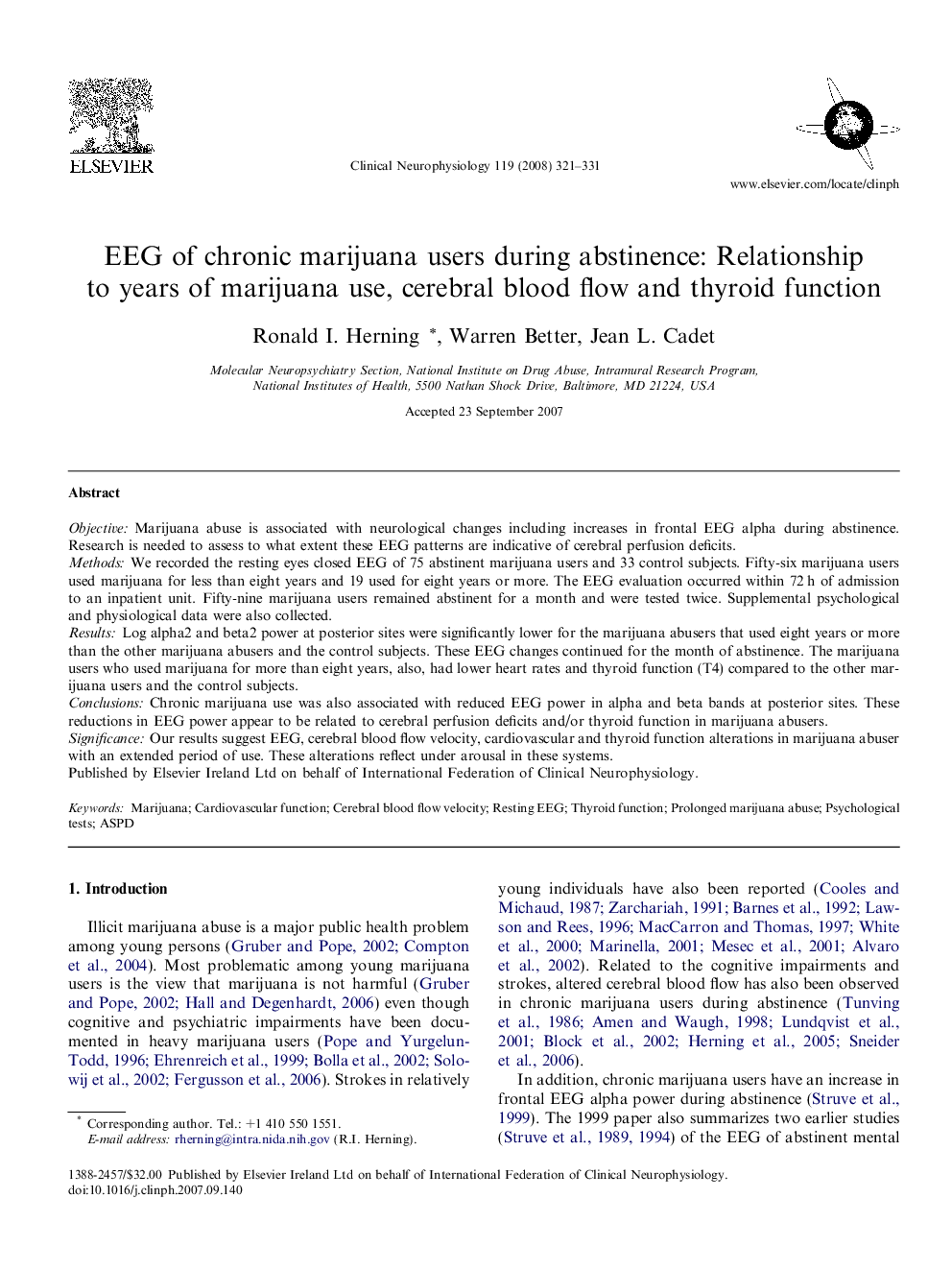| Article ID | Journal | Published Year | Pages | File Type |
|---|---|---|---|---|
| 3047872 | Clinical Neurophysiology | 2008 | 11 Pages |
ObjectiveMarijuana abuse is associated with neurological changes including increases in frontal EEG alpha during abstinence. Research is needed to assess to what extent these EEG patterns are indicative of cerebral perfusion deficits.MethodsWe recorded the resting eyes closed EEG of 75 abstinent marijuana users and 33 control subjects. Fifty-six marijuana users used marijuana for less than eight years and 19 used for eight years or more. The EEG evaluation occurred within 72 h of admission to an inpatient unit. Fifty-nine marijuana users remained abstinent for a month and were tested twice. Supplemental psychological and physiological data were also collected.ResultsLog alpha2 and beta2 power at posterior sites were significantly lower for the marijuana abusers that used eight years or more than the other marijuana abusers and the control subjects. These EEG changes continued for the month of abstinence. The marijuana users who used marijuana for more than eight years, also, had lower heart rates and thyroid function (T4) compared to the other marijuana users and the control subjects.ConclusionsChronic marijuana use was also associated with reduced EEG power in alpha and beta bands at posterior sites. These reductions in EEG power appear to be related to cerebral perfusion deficits and/or thyroid function in marijuana abusers.SignificanceOur results suggest EEG, cerebral blood flow velocity, cardiovascular and thyroid function alterations in marijuana abuser with an extended period of use. These alterations reflect under arousal in these systems.
